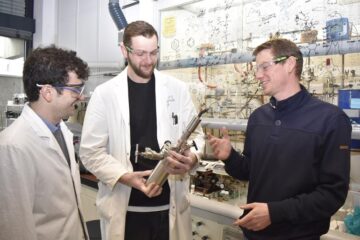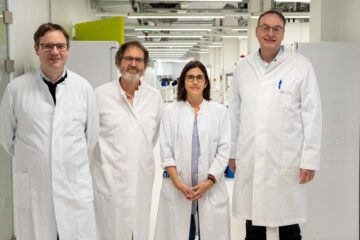Bioactuator:Vorticella actuation in microfluidic systems

Contraction and extension of the stalk are induced by Ca2+ (calcium ions) and chelators such as EDTA and EGTA. As the stalk does not require an external power source for actuation, it has intriguing possibilities for applications in microfluidic systems.
However, controlling Vorticella actuation in a microfluidic device remains a major challenge for these applications. Now Moeto Nagai and colleagues in Japan and Usa at Toyohashi University of Technology have demonstrated that pneumatically controlled microvalves can be used as a control system for the actuation of the stalk.
The experiments were conducted in three steps: microfluidic devices were fabricated by multi-layer soft lithography; the Vorticella were introduced and cultured in the device; Ca2+ and EGTA solution were injected.
The length of the stalks changed between 20 and 60 ìm in the presence of Ca2+ and EGTA, resulting in a working distance of about 40 ìm.
The stalks of Vorticella show genuine potential for applications in microsystems such as micro-positioners and microvalves.
Reference:
Moeto Nagai1,2,Sangjin Ryu3,Todd Thorsen3,Paul Matsudaira3 and Hiroyuki Fujita2Chemical control of Vorticella bioactuator using microfluidicsLab Chip, 10, 1574–1578 (2010). Digital Object Identifier (DOI): 10.1039/C003427D1Moeto Nagai is now at Department of Mechanical Engineering, Toyohashi University of Technology2Institute of Industrial Science, The University of Tokyo3Massachusetts Institute of Technology.
Media Contact
All latest news from the category: Power and Electrical Engineering
This topic covers issues related to energy generation, conversion, transportation and consumption and how the industry is addressing the challenge of energy efficiency in general.
innovations-report provides in-depth and informative reports and articles on subjects ranging from wind energy, fuel cell technology, solar energy, geothermal energy, petroleum, gas, nuclear engineering, alternative energy and energy efficiency to fusion, hydrogen and superconductor technologies.
Newest articles

Efficient, sustainable and cost-effective hybrid energy storage system for modern power grids
EU project HyFlow: Over three years of research, the consortium of the EU project HyFlow has successfully developed a highly efficient, sustainable, and cost-effective hybrid energy storage system (HESS) that…

Safer alternative for an explosive reaction
The chemical industry has been using a reaction with explosive chemicals for over 100 years – now Mülheim scientists have discovered a safer alternative. The Ritter Group of the Max…

How immune cells communicate to fight viruses
Chemokines are signalling proteins that orchestrate the interaction of immune cells against pathogens and tumours. To understand this complex network, various techniques have been developed to identify chemokine-producing cells. However,…





















